Danica Dakić
Works
The city of Zenica, once an up-and-coming centre of industrialization in socialist Yugoslavia, was also an architectonically exemplary modern metropolis. Since the Bosnian war, it has experienced the shadows of modernity with environmental pollution, unemployment and collective resignation. The work pursues the utopias of the city – and the narratives and dreams that people in today’s Zenica associate with it.
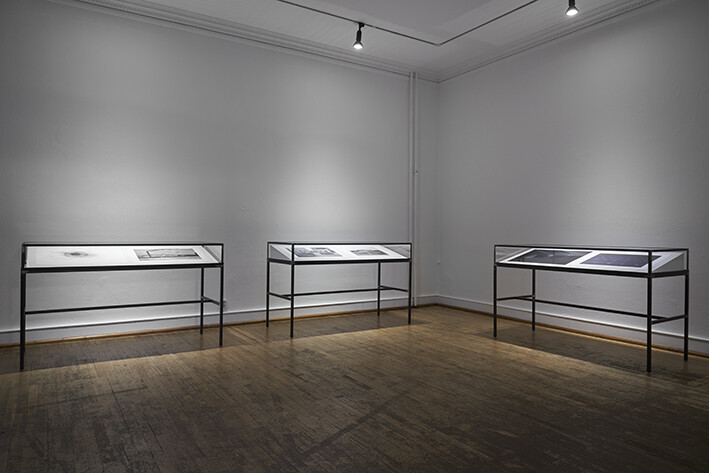
Installation, 2019
Zenica Mapa complements and deepens the subject matter of the Zenica Trilogy. Among other things, drawings by Walter Gropius’ never realized Total Theatre are linked with plans by the Bosnian National Theatre in Zenica. Together with Erwin Piscator, Walter Gropius designed a concept for a technically progressive theatre in the twenties of the 20th century that would overcome the boundary between stage and auditorium.
Photo: © Egbert Trogemann, VG Bild-Kunst Bonn
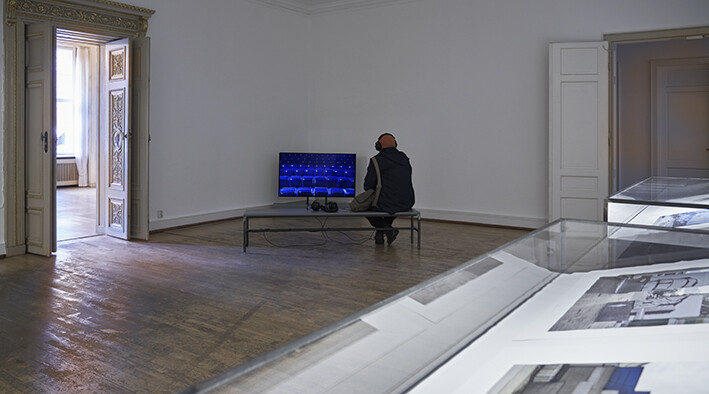
Video, 2019
Danica Dakić portrays the Bosnian National Theatre in Zenica. Photographs of the rotating revolving stage alternate with sequences showing the exterior architecture of the theatre. In the background, Zoran Glogovac, technical director of the theatre, tells the story of the building.
Photo: © Egbert Trogemann, VG Bild-Kunst Bonn
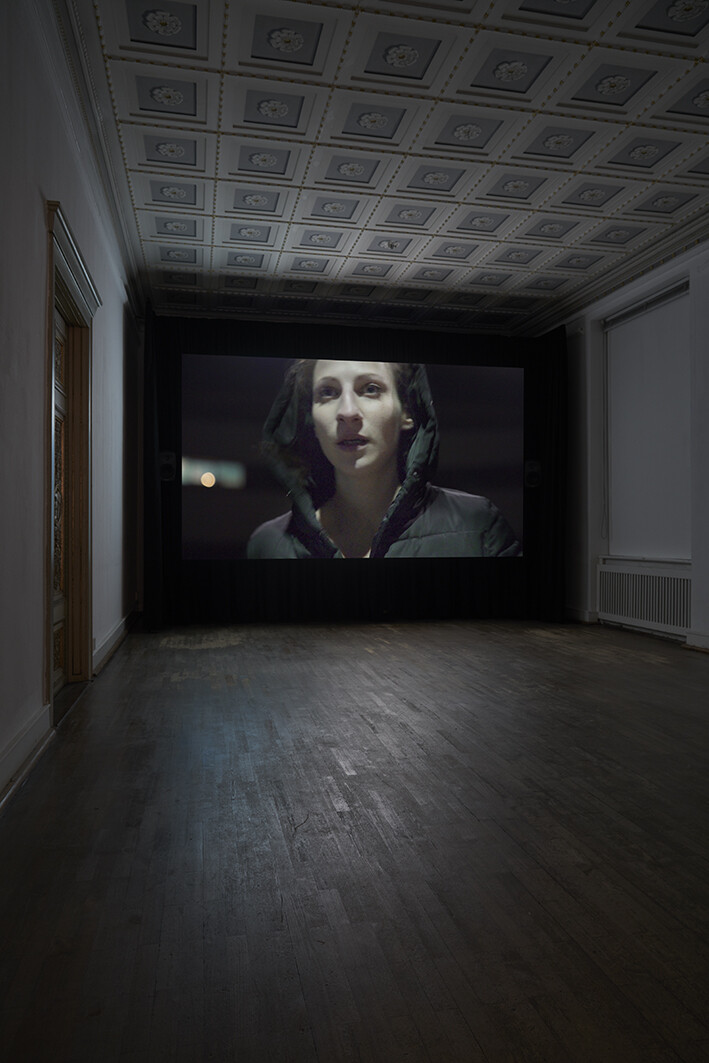
Video, 2019
The video shows a young woman running. Trapped in an endless loop, she continuously approaches a state of complete exhaustion, yet she keeps running. However, she does not make any progress, due to the fact that she keeps running counter to the movement of a rotating platform. It is the big revolving stage of the Bosnian National Theatre in Zenica. Dakić’s work is centered around the relationship between physical existence and roles, between spectator and performer, between individual and society.
Photo: © Egbert Trogemann, VG Bild-Kunst Bonn
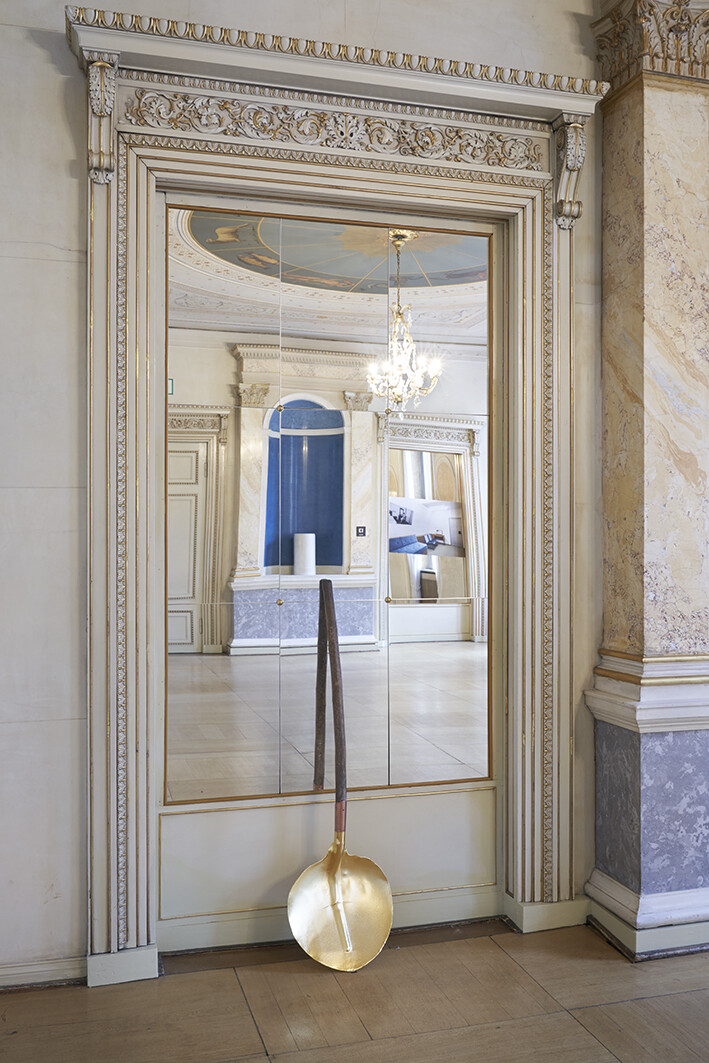
Object, 2019
Named after the »hero of labour« of socialist Yugoslavia, the miner Alija Sirotanović, Danica Dakić’s work feeds on two legends. When President Tito asked Sirotanović what he wanted as a reward for his work, he replied: »A bigger shovel«. Workers at the Breza mine told him that Sirotanović had asked one of his colleagues to sit in the snow in order to use the resulting cast as a negative form for an individual blade model. The workers gave the artist such a shovel, a Sirotanovićka, which was subsequently gilded by Dakić.
Photo: © Egbert Trogemann, VG Bild-Kunst Bonn
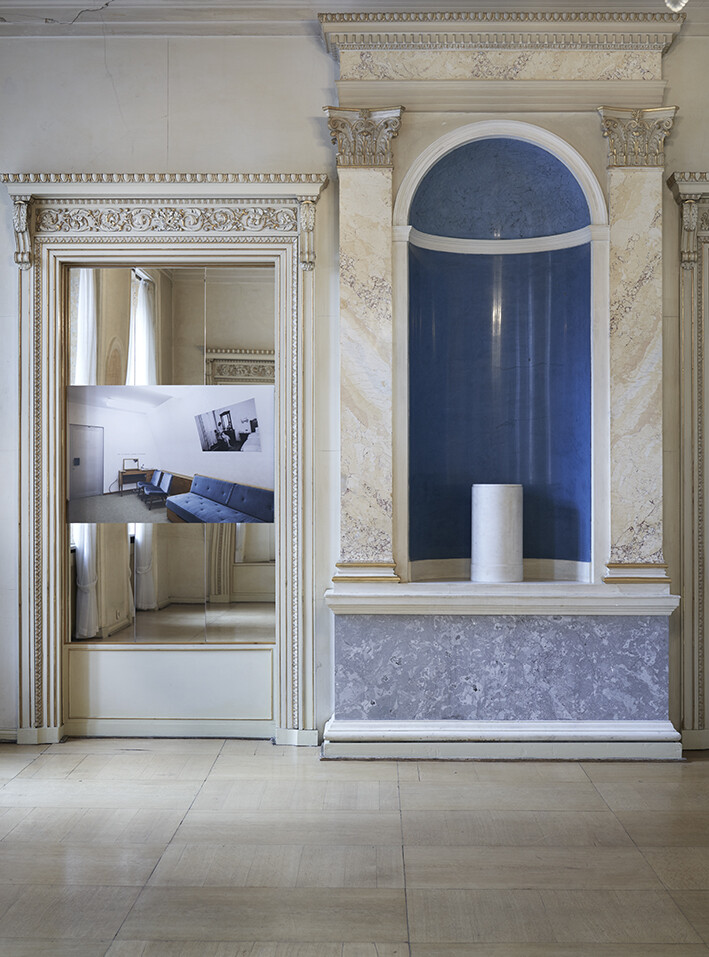
Photograph, 2012
The photograph shows a room in the underground nuclear bunker of Yugoslav president Tito near Konjic, which was reserved for Jovanka Broz, Tito’s wife. As part of an exhibition, Danica Dakić had a photograph of her mother from a shared holiday from her private archive hung up there. The statement on the wall »Work is a conscious human activity« quotes a personal advice of the mother, who thinks she is taking up a Marxist definition of work in order to recommend to her daughter a more economic relationship between work effort and result.
Photo: © Egbert Trogemann, VG Bild-Kunst Bonn
Danica Dakić, born 1962, is based in Düsseldorf. Her work has been shown in solo exhibitions at Lehmbruck Museum (2017), MMK (2013) and Hammer Museum (2011) as well as in group exhibitions at documenta 12 (2007), Istanbul Biennale (2009), São Paulo Biennale (2014), 58th La Biennale di Venezia (2019) and 1. , 2. and 3. Berliner Herbstsalon.
